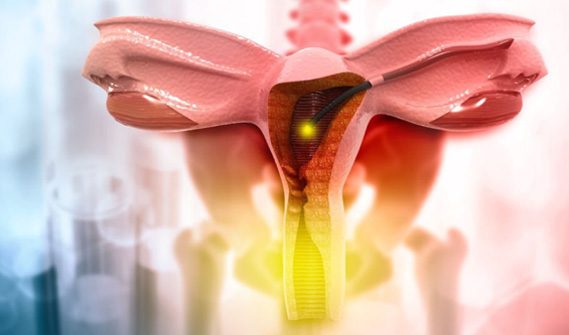What is a Hysteroscopy Procedure?
In a procedure called hysteroscopy, a telescope passes through the stomach and into the uterus to view the inside of the body. To diagnose a condition, a hysteroscopy can be used. When treatment is needed, hysteroscopy can also treat or prevent future problems.
Types of Hysteroscopy:
-
Diagnostic Hysteroscopy
This part of hysteroscopy is used to diagnose or determine problems in the uterus. It can also be used after other fertility tests like HSG, laparoscopy, and X-rays.
-
Operative Hysteroscopy
This type of Hysteroscopy refers to the use of the procedure to address problems discovered through either Diagnostic Hysteroscopy or another test. This can be done simultaneously with Diagnostic Hysteroscopy, saving you time and avoiding needing another surgery.
Why Hysteroscopy Procedure is done?
A surgeon can correct the following conditions through hysteroscopy.
Hysteroscopy is used for minor surgical procedures as well as diagnosis. The Hysteroscopy procedure treats minor anatomical problems of the uterus. Hysteroscopy is an essential part of infertility treatment. It can remove fibroids, polyps, and other anatomical defects.
1. Removal of Fibroids and Polyps
Recurrent abortions and pregnancy loss can be caused by fibroids or polyps that have grown too large. Hysteroscopy can remove these uterine tissue growths.
2. Find and Remove Adhesions
Infertility and increased menstrual flow can be caused by uterine scar tissue. These adhesions can be found and removed by hysteroscopy.
3. Septums
A septate uterus is a uterine anomaly that raises the risk of miscarriage. The septum can be removed by hysteroscopy.
4. Abnormal Bleeding
In order to determine the cause of severe bleeding or bleeding in between periods, a hysteroscopy is performed. Laser, electrocautery, or surgical methods are used to treat bleeding areas found during the procedure.
What is the Procedure of Hysteroscopy?
Only a team of medical professionals can perform hysteroscopy under general anesthesia.
- Our IVF experts will advise you to eat light foods the day before the hysteroscopy. General or local anesthesia may be used depending on the circumstances.
- The doctor will instruct you to lie down on the operating room table. You will be in the same position as when you are undergoing a gynecological exam by placing your feet in the stirrups on the table.
Hysteroscopy Procedure.
- You lie down on a couch, your legs supported by supports. A sheet is used to cover the lower half of your body.
- An instrument known as a speculum can be inserted into your cervix to keep it open. This is the same instrument that was used for cervical screening. However, this is not always necessary.
- Use an antiseptic solution to clean the cervix and vaginal areas.
- A hysteroscope is a long, thin tube containing light and a camera. It is passed through your cervix and may cause cramping or discomfort.
- To make it easier to observe within the womb, fluid is delicately injected.
- The camera transmits images to a monitor, so your specialist nurse or doctor can spot any abnormalities.
Hysteroscopy IVF
Our IVF specialists often use hysteroscopy to diagnose patients with infertility. A hysteroscopy is part of the IVF process. It will allow us to check that your uterus and sperm are healthy enough to implant an embryo.
Our fertility specialist will identify any potential issues during hysteroscopy and help you find the best fertility treatment options. Furthermore, Your doctor might recommend waiting a few weeks (for large fibroids) before you start an IVF cycle.
What are the Advantages of the Hysteroscopy Procedure?
Hysteroscopy allows your surgeon to diagnose and treat multiple conditions in one operation. It makes precise, minimally invasive surgery possible. Hysteroscopy allows your surgeon to find abnormalities and remove them without causing any damage to surrounding tissue.
What risk can be associated with Hysteroscopy?
A hysteroscopy has possible risks, just like any medical procedure.
- Problems with anaesthesia
- Infection
- Although it is uncommon, there are rare cases of damage or tears to your cervical cervix.
- Probleme with gas or liquid from the uterus
- Damage can occur to nearby organs such as the ovaries, bowel, or bladder.
Call your doctor immediately if you have symptoms such as a fever, severe abdominal discomfort, or heavy bleeding following the procedure.
What are the complications of Hysteroscopy?
Complications associated with hysteroscopy are rarely seen, but below are some complications which include-
- An anesthetic reaction with the liquid is used to clean the uterus.
- Heavy bleeding may occur after the procedure.
- Pulmonary edema.
- Uterine perforation.
- Injury to the uterus.
- During operative hysteroscopy, scarring of the uterus tissues may occur.
- Infection in the uterus or the vagina may occur because of the hysteroscope.
How much does Hysteroscopy Cost?
Depending on the kind and caliber of care obtained, hysteroscopy costs range from INR5,000 to INR50,000. Some insurance policies cover the cost of hysteroscopy.
Your surgeon may recommend a hysteroscopy for many reasons. Infertility cases may require a close examination of the uterus and minor surgery.
This is a low-risk procedure, and the recovery time is fast. You can resume your daily activities within two days. Some failed IVF attempts can be avoided by having a Hysteroscopy before IVF. This increases your chances of natural conception and successful IVF.




